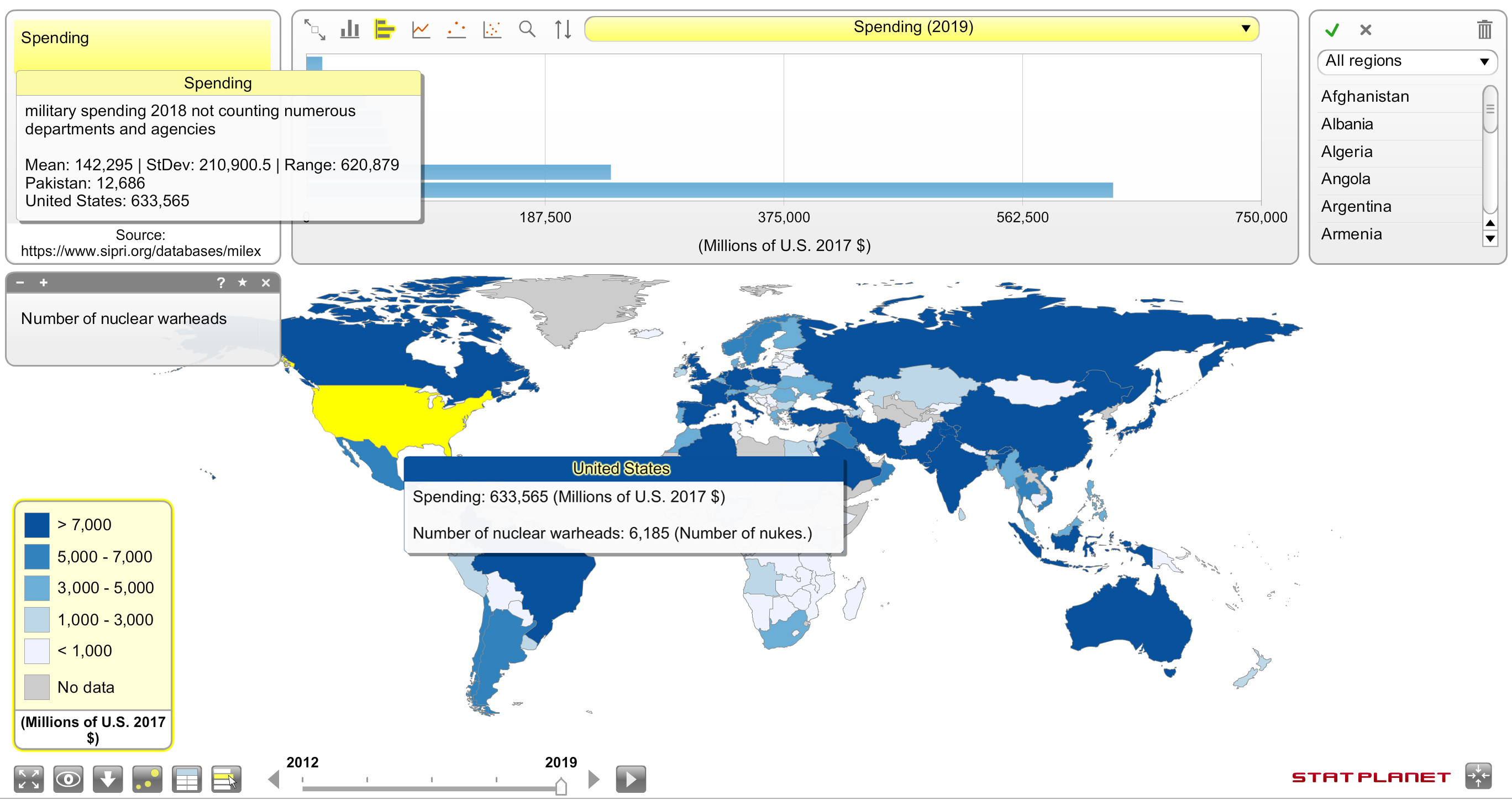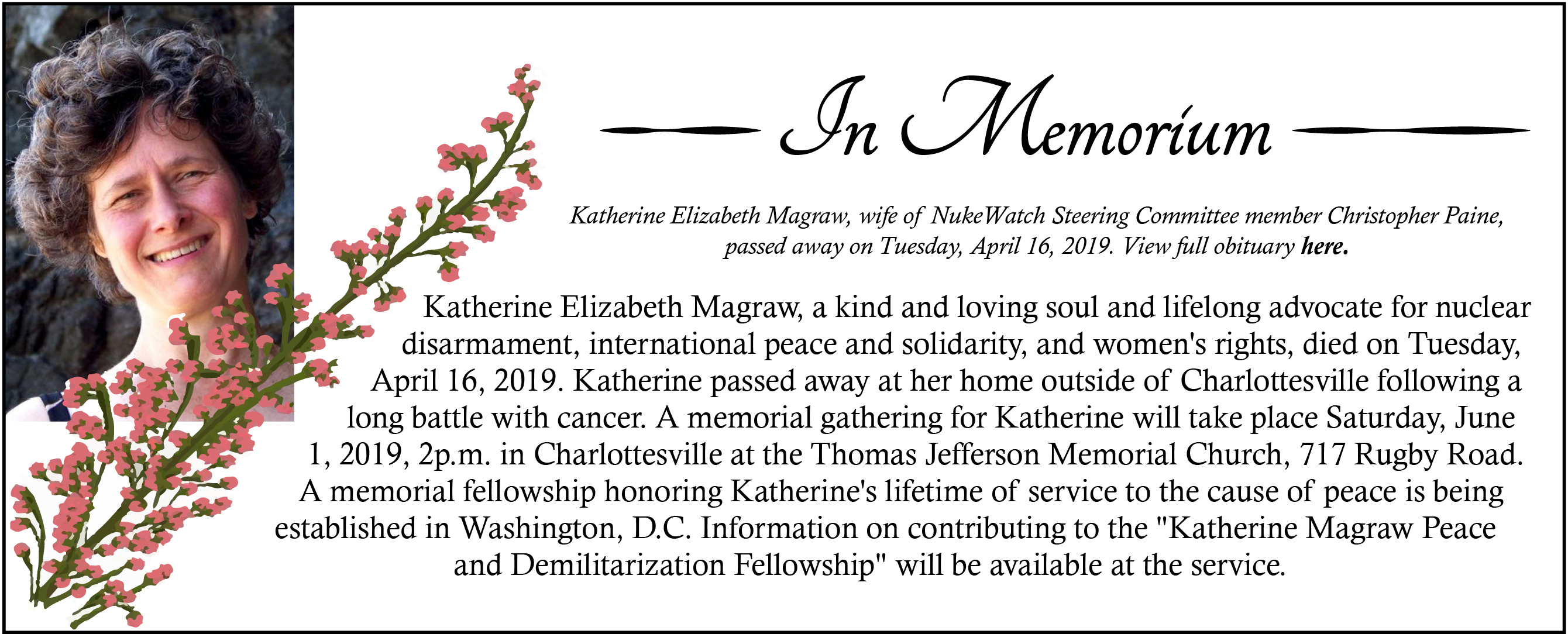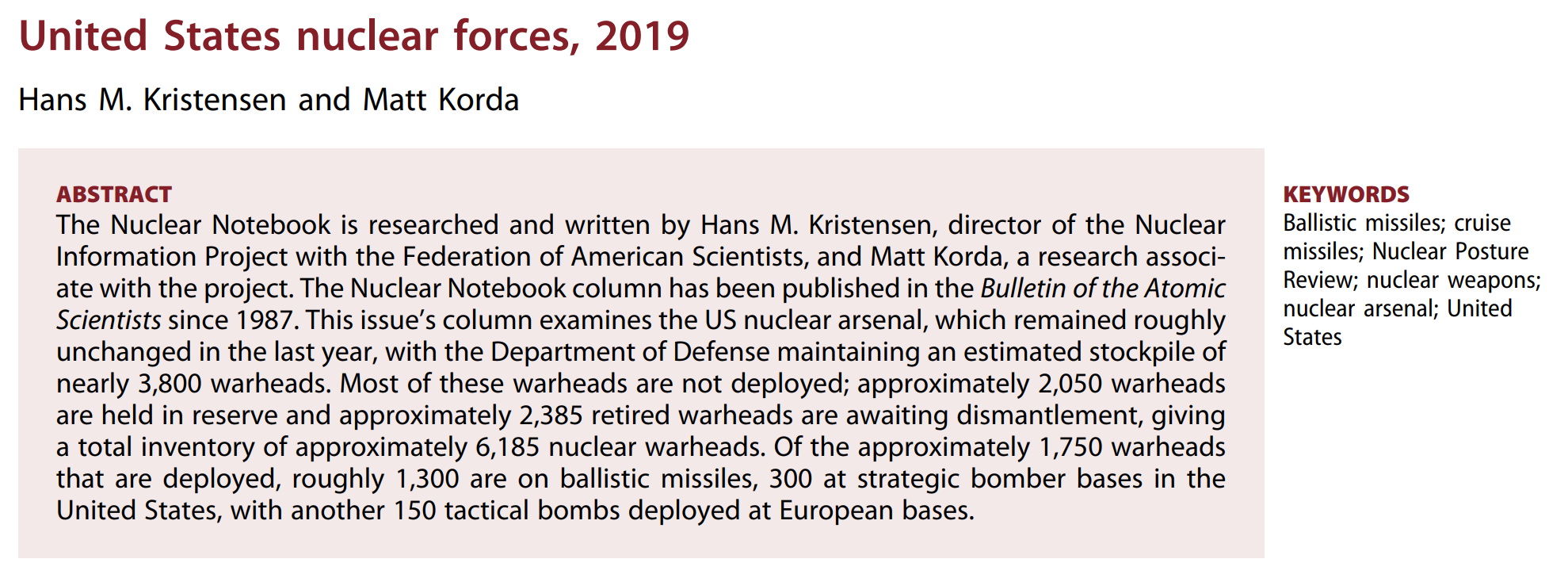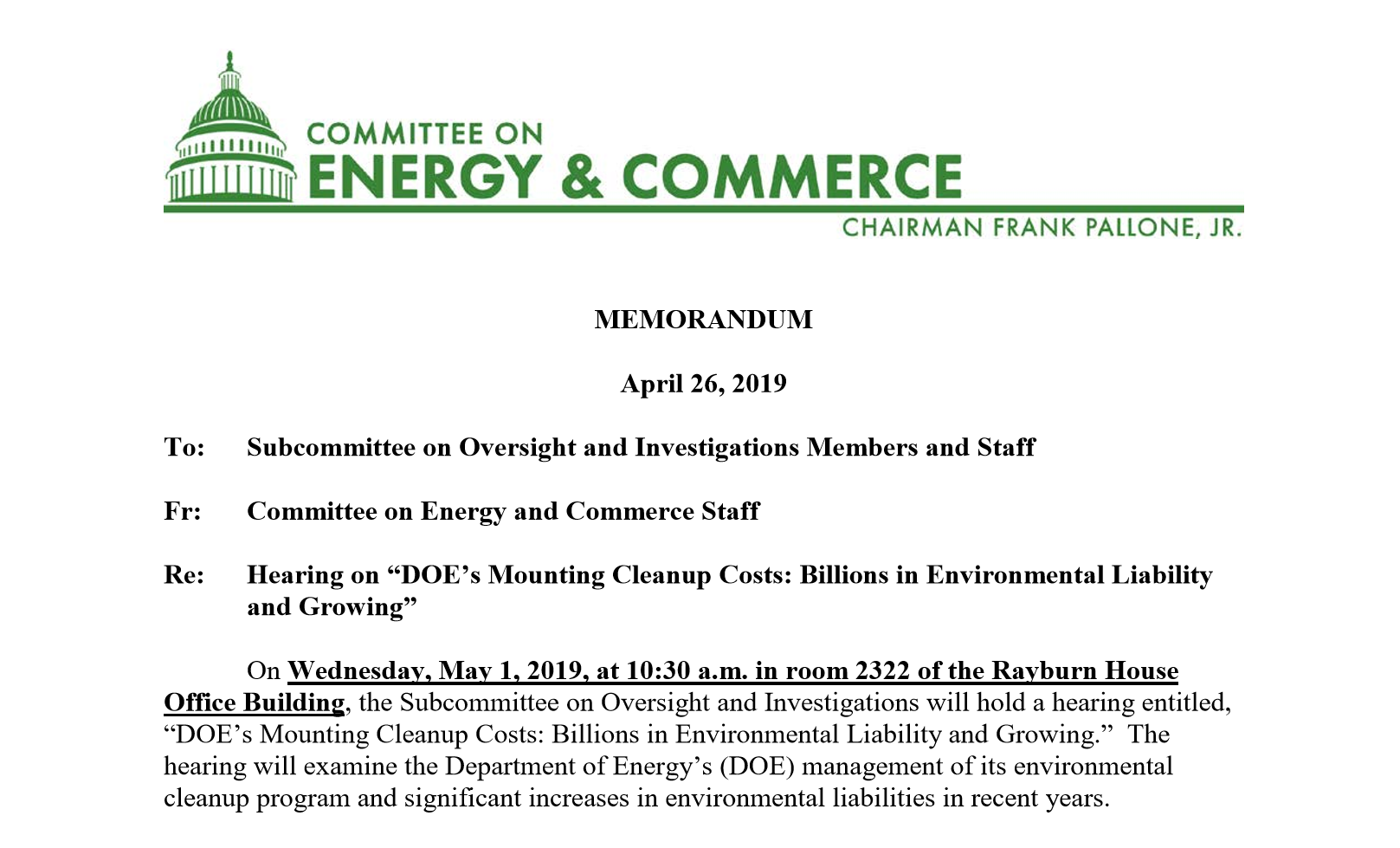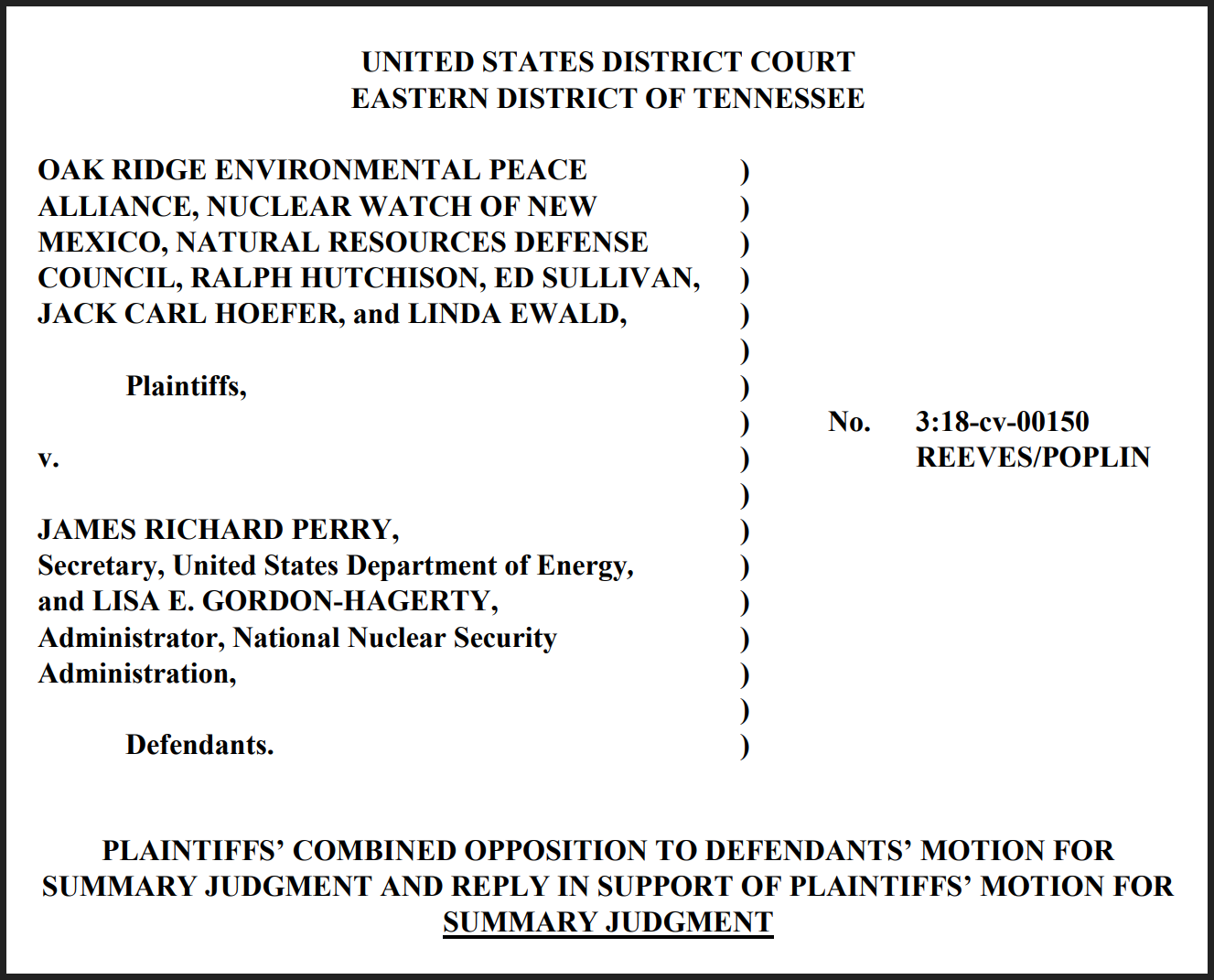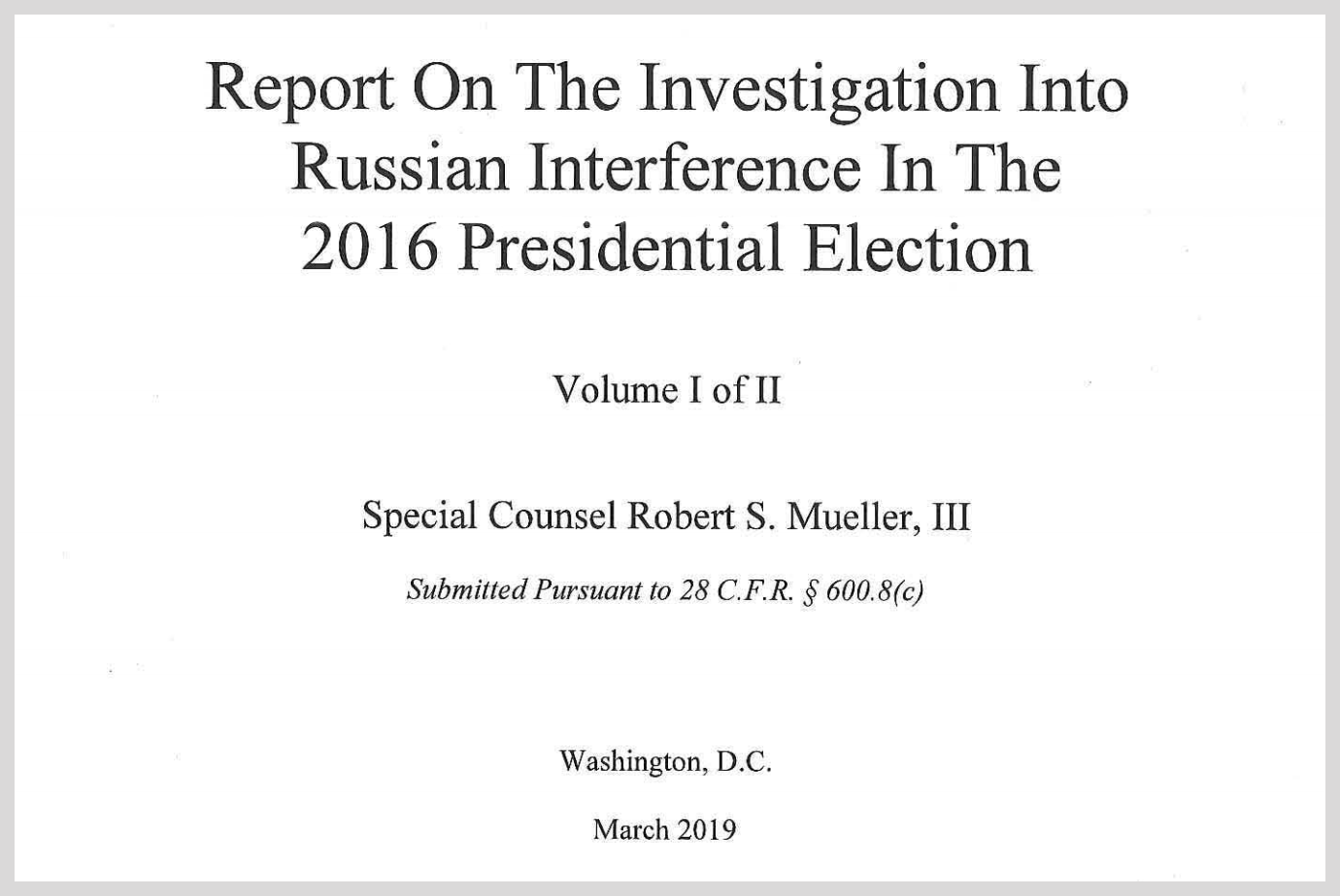2023 News Articles – All Posts
Nothing Found
It seems we can’t find what you’re looking for. Perhaps searching can help.
2022 Select Highlighted Press Items
Nuclear Modernization is the ’Absolute Minimum,’ STRATCOM Commander Says | March 8, 2022
US tested hypersonic missile in mid-March but kept it quiet to avoid escalating tensions with Russia | April 4, 2022
Putin’s Nuclear Threats Are a Wake-Up Call for the World | March 15, 2022
Intelligence report determines that Russia's WMD threats will grow as losses mount in Ukraine | March 19, 2022
China and the United States: It’s a Cold War, but don’t panic | March 10, 2022
Russian military doctrine calls a limited nuclear strike “de-escalation.” Here’s why. | March 8, 2022
North Korea says it will strike with nuclear weapons if South attacks | April 4, 2022
Flying Under The Radar: A Missile Accident in South Asia | April 4, 2022
2022 News Articles
World BEYOND War: Updated 2019 Mapping of Militarism in the World
Open the mapping system, check out, and customize the maps here.
Click HERE to view some examples of what the map system can show
BY DAVID SWANSON Executive Director, World BEYOND War | worldbeyondwar.org – May 6, 2019
ARMS CONTROL TODAY – REMARKS: Gorging at the Nuclear Buffet Table
“It’s like showing up at a buffet and, instead of having a balanced meal, you say, “I will just gorge on every single capability that is out there.” When you only need a balanced meal to do the job, you don’t need to eat everything at the nuclear buffet table, including offensive and defensive weapons.
BY SEN. CHRIS VAN HOLLEN | armscontrol.org – May 2019
Unlike a dinner buffet where it’s “all you can eat at a fixed price,” the nuclear buffet table requires you to pay for everything. With the current spending plan, that is right now estimated to be $1.7 trillion over the next 30 years by the Congressional Budget Office. If you add on all the other capabilities this administration apparently wants to add on, you’re talking about an even bigger price tag.” Senator Chris Van Hollen, Appropriations Committee”
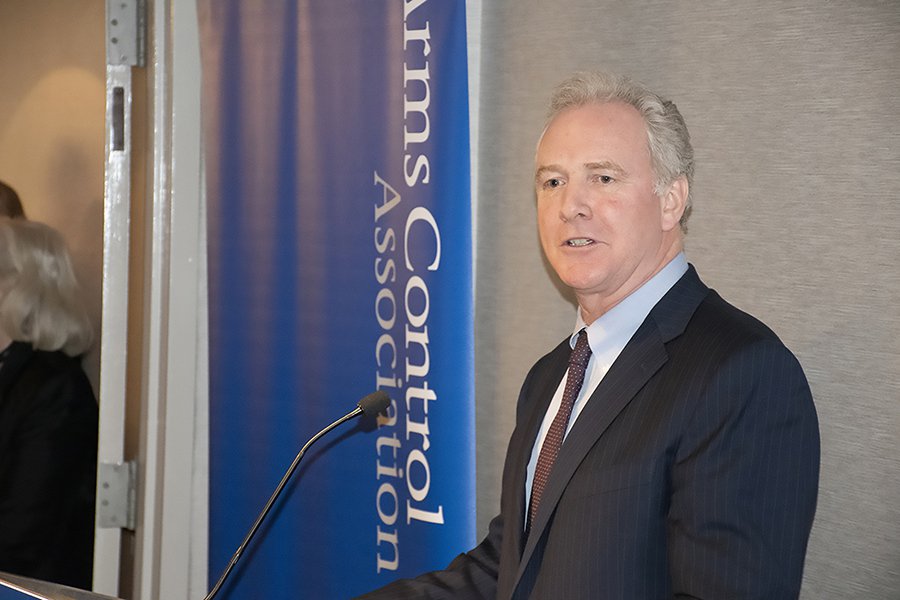
Before I ever thought of running for elected office, I interacted a lot with folks at the Arms Control Association and in the arms control community back in the 1980s. I grew up in a Foreign Service family in many places around the world, but one of the things that I remember most and that had a great impact on me was when I read Jonathan Shell’s New Yorker series, “The Fate of the Earth,” that described what would happen to the planet after a nuclear war.
The Madness of Nuclear Deterrence
“The dangers have only become more acute in the decades since I tried to convince Thatcher.”
BY MIKHAIL GORBACHEV | wsj.com
‘Deterrence cannot protect the world from a nuclear blunder or nuclear terrorism,” George Shultz, William Perry and Sam Nunn recently wrote. “Both become more likely when there is no sustained, meaningful dialogue between Washington and Moscow.” I agree with them about the urgent need for strategic engagement between the U.S. and Russia. I am also convinced that nuclear deterrence, instead of protecting the world, is keeping it in constant jeopardy.
I asked her: “Are you really comfortable sitting on a nuclear powder keg?” I showed her a diagram representing the world’s nuclear arsenals, grouped into hundreds of squares. Each square, I told her, is enough to eliminate human civilization as we know it. I was unable to persuade Margaret Thatcher. We hear the same arguments today, including in the U.S. and Russia.
Continue reading
Hear ye, hear ye ?
The official 2019 @FAScientists US Nuclear Notebook (written by @nukestrat and yours truly) is out today in @BulletinAtomic! ??
Freely access the most up-to-date estimates of the US nuclear arsenal here:https://t.co/9HboPoKhMT pic.twitter.com/DiIAsBh5fv
— Matt Korda (@mattkorda) April 29, 2019
Report: LANL Nuclear Safety Falls Short
This article illustrates why planned expanded plutonium pit production for new nuclear weapons at the Los Alamos Lab has a high probability of failure.
Los Alamos National Laboratory is again facing criticism for failing to ensure nuclear safety in its operations, this time from a U.S. Department of Energy assessment office. (AP Photo/Albuquerque Journal)BY MARK OSWALD | abqjournal.com
SANTA FE – The U.S. Department of Energy has again found that Los Alamos National Laboratory falls short in ensuring nuclear safety in its operations, even as the lab moves toward a major increase in plutonium work under a mandate to ramp up manufacture of the cores of nuclear weapons.
A report released Monday by a DOE assessment team provides a long list of problems in how LANL manages nuclear safety issues. It notes deficiencies by both the private consortium that managed the lab for about 12 years before losing the $2 billion-plus annual operating contract last year and as well Triad National Security LLC, which took over Nov. 1.
The report says former contractor Los Alamos National Security LLC, or LANS, allowed safety issues to fester with “significant weaknesses.”
There are “institutional behaviors that have allowed identified problems to go uncorrected, problem recurrences to be routinely accepted, and corrective actions to often be delayed for years,” according to the report DOE’s Office of Enterprise Assessments.
The safety lapses are serious enough that they could lead to another shutdown of operations at LANL’s plutonium facility, the assessment suggests.
Read the report HERE
From the report’s executive summary: Overall, this assessment identified significant weaknesses in the LANS IM [issues management] process and institutional behaviors that have allowed identified problems to go uncorrected, problem recurrences to be routinely accepted, and corrective actions to often be delayed for years.Although the assessment team did not identify any immediate threats to workers, the public, or the environment, these weaknesses in IM, if uncorrected, can allow layers of defense for nuclear safety to degrade to the extent they did leading to the pause in July 2013 of key fissile material operations in the Plutonium Facility at LANL for over four years.
“According to the Government Accountability Office (GAO), EM’s environmental liability grew by about $214 billion from fiscal years 2011 through 2018, more than doubling its cleanup liability in just six years. This dramatically outpaced the roughly $45 billion EM spent on cleanup activities during that period.”
“NukeWatch: We should be expanding cleanup programs instead of nuclear bomb production that made this mess to begin with.”
View the PDF
 Our Episode 03 doesn’t have the Night King or hordes of the undead, BUT I do get to talk with Leah Greenberg, co-founder of Indivisible and one of Time Magazine’s 100 most influential people of 2019, to discuss her journey from congressional staffer to community organizer. She talks about how the idea for a 2016 handbook ignited a progressive movement of civic engagement for everyday people. Also, Ploughshares Fund’s own Michelle Dover reflects on the legacy of Indiana Senator Richard Lugar. John Carl Baker takes a closer look at the motives and intentions of Trump’s offer for arms control talks with Russia and China.
Our Episode 03 doesn’t have the Night King or hordes of the undead, BUT I do get to talk with Leah Greenberg, co-founder of Indivisible and one of Time Magazine’s 100 most influential people of 2019, to discuss her journey from congressional staffer to community organizer. She talks about how the idea for a 2016 handbook ignited a progressive movement of civic engagement for everyday people. Also, Ploughshares Fund’s own Michelle Dover reflects on the legacy of Indiana Senator Richard Lugar. John Carl Baker takes a closer look at the motives and intentions of Trump’s offer for arms control talks with Russia and China.
You can listen here: http://pressthebutton.libsyn.com/
Or – Listen and subscribe on iTunes · Spotify · SoundCloud · Google Play
DOD Official Ducks Question of Plutonium Pit Assurance if Congress Allows Only 1 Site
WASHINGTON – A senior Pentagon official declined to say here Wednesday whether he believes the Department of Energy can deliver nuclear warheads for next-generation intercontinental ballistic missiles on time if Congress does not fund both the plutonium-pit production plants the civilian agency wants to build.
“I’m aware of the issue, but I wouldn’t want to sort of step on my colleagues’ toes by addressing the details,” David Trachtenberg, deputy undersecretary of defense for policy, said following a speech at the Brookings Institution. “I’ll defer on that one, for the time being, at least.”
In an email, a spokesperson with DOE’s National Nuclear Security Administration (NNSA) said the agency “is focused on the two-site approach for plutonium pit production that was endorsed by the Nuclear Weapons Council in May 2018.”
The Donald Trump administration’s 2018 Nuclear Posture Review called on the NNSA to annually manufacture 80 pits — fissile nuclear-weapon cores — by 2030.
 In the second episode of Press The Button, the new podcast from Ploughshares Fund, Ned Price, former spokesperson for President Obama’s National Security Council and current Director of Communications and Policy with National Security Action, sits down with host Joe Cirincione. Also: this week’s nuclear news analysis with Ploughshares Fund Deputy Director of Policy Mary Kaszynski and Nuclear Field Coordinator and Senior Program Officer John Carl Baker.
In the second episode of Press The Button, the new podcast from Ploughshares Fund, Ned Price, former spokesperson for President Obama’s National Security Council and current Director of Communications and Policy with National Security Action, sits down with host Joe Cirincione. Also: this week’s nuclear news analysis with Ploughshares Fund Deputy Director of Policy Mary Kaszynski and Nuclear Field Coordinator and Senior Program Officer John Carl Baker.
You can listen here: http://pressthebutton.libsyn.com/
Or – Listen and subscribe on iTunes · Spotify · SoundCloud · Google Play
New Report Spells Out Saner Nuclear Spending Options
BY KINGSTON REIF & ALICIA SANDERS-ZAKRE | armscontrol.org
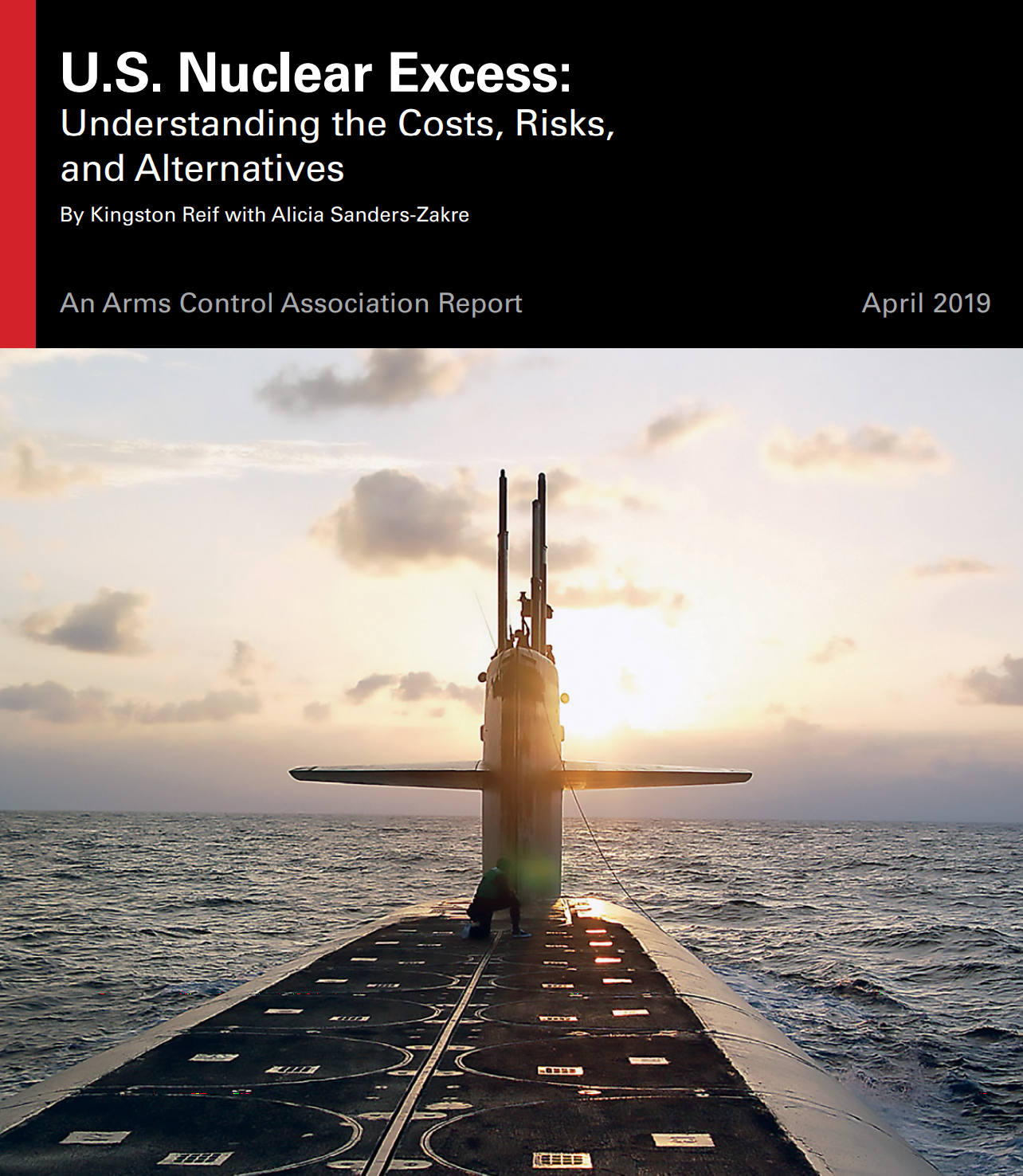 Despite characterizing during the Helsinki summit U.S. plans to replace the aging nuclear arsenal as “very, very bad policy,” the Trump administration is pursuing an excessive and unsustainable expansion of the role and capability of the U.S. nuclear arsenal to the tune of nearly $500 billion, after inflation, over the next decade. Over the next 30 years, the price tag is likely to top $1.5 trillion and could even approach $2 trillion.
Despite characterizing during the Helsinki summit U.S. plans to replace the aging nuclear arsenal as “very, very bad policy,” the Trump administration is pursuing an excessive and unsustainable expansion of the role and capability of the U.S. nuclear arsenal to the tune of nearly $500 billion, after inflation, over the next decade. Over the next 30 years, the price tag is likely to top $1.5 trillion and could even approach $2 trillion.
As our newly published report documents, it doesn’t have to be this way. U.S. Nuclear Excess: Understanding the Costs, Risks and Alternatives describes three realistic options to reduce spending on nuclear weapons and recommends steps Congress can take to adjust the programs to deal with the long-term budget challenges.
A companion website will be launched this summer, will provide regular updates on cost estimates and key decisions. The report and website were made possible with support from a project grant from the Charles Koch Foundation.
Hard duty in the Chernobyl zone
Cathie Sullivan, a New Mexico activist, worked with Chernobyl liquidator, Natalia Manzurova, during three trips to the former Soviet Union in the early 2000s. Natalia was one of 750,000 Soviet citizens sent to deal with the Chernobyl catastrophe. Natalia and Cathie together authored a short book, “Hard Duty, A woman’s experience at Chernobyl” describing Natalia’s harrowing four and a half years as a Chernobyl liquidator.
View an excerpt in this ARTICLE FROM beyondnuclearinternational.org
Feds stand by splitting ‘pit’ production between LANL, S.C.
“NNSA’s plans for expanded plutonium pit production is a house of cards waiting to fall down. First, we have an agency with a long track record of cost overruns and schedule slippages. Added to this is the lack of true mission need.
“Plutonium pit production is not being expanded to maintain stockpile safety and reliability. Instead it’s all about provocative new nuclear weapons designs that can’t be tested, or alternatively will push the U.S. back into testing with serious proliferation consequences.” – Nuclear Watch New Mexico director Jay Coghlan
BY MARK OSWALD | abqjournal.com
Lisa E. Gordon-HagertySANTA FE – Key federal agencies are standing by their plan split the work of producing the plutonium cores of nuclear weapons between Los Alamos National Laboratory and another site, a move that New Mexico’s congressional delegation continues to oppose.
But the Department of Defense and the National Nuclear Safety Administration were not unequivocal in describing the potential success of a two-site plan for making plutonium “pits.”
“Indeed, no option is without risk,” said NNSA administrator Lisa E. Gordon-Hagerty in a news release Wednesday.
The NNSA, which oversees the nation’s nuclear weapons labs, announced that a contractor has completed a study of options for pit production that was mandated by language added to a defense budget bill by New Mexico Sens. Tom Udall and Martin Heinrich.
The two senators want all pit production — and the federal dollars and jobs that come with it — to remain at LANL and say turning a facility at the Savannah River Site in South Carolina into a second pit-production post will make the undertaking much more expensive.
2020 Democratic Candidates on the Issue of Climate Change
The New York Times sent a climate policy survey to the 18 declared candidates. They all want to stick to the Paris Agreement. Beyond that, they diverge.
Senator Kirsten Gillibrand spoke at a rally for the Green New Deal at the Capitol last month.CreditCreditSarah Silbiger/The New York TimesBY LISA FRIEDMAN & MAGGIE ASTOR | nytimes.com
The nuclear option
The most divisive policy among the candidates was nuclear energy. Many climate change activists reject nuclear plants, even though they emit no carbon dioxide, because of safety concerns and a general preference for wind, solar and other purely renewable sources. And only seven candidates were unequivocally in favor of new nuclear energy development.
Mr. Sanders, who has called for a moratorium on nuclear power license renewals in the United States, rejected nuclear energy, as did Ms. Gabbard and Mr. Messam, the mayor of Miramar, Fla.
NNSA Downplays Study That Says Agency Can’t Make 50 Nuke Cores Per Year by 2030 in S.C.
A planned South Carolina facility will be able to produce 50 plutonium nuclear-weapon cores a year by 2030, despite a Department of Energy-funded study that says 2035 is more realistic, according to a top official with DOE’s National Nuclear Security Administration (NNSA).
BY DAN LEONE | exchangemonitor.com
“We have been working on scenarios to bring it back in time to ‘30,” Charles Verdon, NNSA deputy administrator for defense programs, told Nuclear Security & Deterrence Monitor Tuesday after a hearing of the House Armed Services strategic forces subcommittee.
In congressional testimony this year, NNSA Administrator Lisa-Gordon Hagerty has repeatedly mentioned the study — an engineering analysis completed by Parsons Government Services in 2018 — in the same breath as her appeals to lawmakers that the agency can only meet the Pentagon’s demand for 80 cores a year by 2030 by building the South Carolina facility while also producing cores in New Mexico.
– The full referenced Parson engineering analysis can be viewed here, & a summary here –
NNSA remains silent on meeting national Environmental Policy Act requirements for public environmental review.
![]() Recognizes the Inherent Challenges in Meeting Requirements for Plutonium Pit Production and Notes that the Current Approach is Achievable Given Sufficient Time, Resources, & Management Focus
Recognizes the Inherent Challenges in Meeting Requirements for Plutonium Pit Production and Notes that the Current Approach is Achievable Given Sufficient Time, Resources, & Management Focus
energy.gov | WASHINGTON – A study of the National Nuclear Security Administration’s (NNSA) recommended alternative to revitalize the United States’ plutonium pit production capabilities was delivered April 16 to Congress by the Department of Defense (DoD).
The Fiscal Year 2019 National Defense Authorization Act required the Secretary of Defense, in consultation with the NNSA Administrator, to contract a federally funded research and development center (FFRDC) to conduct an assessment of NNSA’s two-pronged approach to achieve DoD’s requirement for producing no fewer than 80 plutonium pits per year by 2030.
The Ploughshares Fund has released an official trailer for their new podcast, Press the Button! The podcast will cover the latest news, feature exclusive interviews and share insider, in-depth perspectives on all things nuclear. President of Ploughshares Fund Joe Cirincione will be the host, and you will also hear from many Ploughshares Fund voices like Program Director Michelle Dover, Deputy Policy Director Mary Kaszynski, Roger Hale Fellow Catherine Killough, Communications Director Delfin Vigil and more.
Press the Button will feature the smartest voices in nuclear and national security analyzing all the key issues. So, please take a listen. Our first full-length episode, with special guest Dr. Carol Cohn, will be dropping soon.
– Listen and subscribe on iTunes.
– Listen and subscribe on Spotify.
– Listen and subscribe on SoundCloud.
– Listen and subscribe on Google Play.
A NEW VISION 2019
The Ploughshares Fund has released a new report, “A New Vision: Gender. Justice. National Security.” These 10 essays from leading women in the field present a snapshot of what could be the start of a truly diverse, equitable and inclusive new vision for nuclear policy and national security.
This collection presents a snapshot of what could be the start of a truly diverse, equitable, inclusive and just new vision for nuclear policy and national security, direct from the minds of leading women in the field. We are grateful to the funding partners who made this report (pdf) possible.
US-Russia Chill Stirs Worry About Stumbling Into Conflict
The deep chill in U.S.-Russian relations is stirring concern in some quarters that Washington and Moscow are in danger of stumbling into an armed confrontation that, by mistake or miscalculation, could lead to nuclear war.
BY ROBERT BURNS | apnews.com
WASHINGTON (AP) — It has the makings of a new Cold War, or worse. American and European analysts and current and former U.S. military officers say the nuclear superpowers need to talk more. A foundational arms control agreement is being abandoned and the last major limitation on strategic nuclear weapons could go away in less than two years. Unlike during the Cold War, when generations lived under threat of a nuclear Armageddon, the two militaries are barely on speaking terms.
“During the Cold War, we understood each other’s signals. We talked,” says the top NATO commander in Europe, U.S. Army Gen. Curtis Scaparrotti, who is about to retire. “I’m concerned that we don’t know them as well today.”
Scaparrotti, in his role as Supreme Allied Commander Europe, has met only twice with Gen. Valery Gerasimov, the chief of the Russian general staff, but has spoken to him by phone a number of other times.
VAN HOLLEN LEADS LETTER URGING EXTENSION OF NEW START TREATY WITH RUSSIA
In the face of the Trump Administration abandoning international treaties and agreements, Nuclear Watch New Mexico applauds our senators Tom Udall and Martin Heinrich for signing this important letter defending nuclear arms control.
vanhollen.sentate.gov | Today U.S. Senator Chris Van Hollen led a letter with 23 Democratic Senators urging President Trump to extend the New Strategic Arms Reduction Treaty (New START) with Russia for another five years. This week marked the ninth anniversary of the signing of the treaty.
"Without inhibiting the ability of the United States to maintain a survivable, reliable, and effective nuclear deterrent, New START has advanced the security interests of the United States and underpinned strategic stability with a major nuclear-armed rival. By setting mutual limits on the numbers of deployed nuclear warheads and deployed and non-deployed strategic delivery vehicles, the treaty constrains the size and composition of Russia's nuclear capabilities and – through comprehensive monitoring and transparency measures – allows the United States to verify Russia's treaty compliance with confidence. New START is due to expire in February 2021 and can be extended for up to five additional years by agreement between the U.S. and Russian presidents," the Senators wrote.
They conclude, "Arms control is not an end in itself; it is a tool for containing the military capabilities of our adversaries and safeguarding the national security interests of the United States and its allies. Since 1972, Republican and Democratic administrations alike have pursued such measures as a complement to maintaining a robust nuclear deterrent. We urge you to sustain this bipartisan policy and advance U.S. security by extending New START for an additional five years."
The full text of the letter is available below and here.
"NukeWatch is very concerned over the possible termination of the JASONs. In 2004 NukeWatch asked then-Sen. Jeff Bingaman to require a JASONs study on the reliable lifetimes of plutonium pits, the cores of nuclear weapons. At the time the govt claimed pits were reliable for 45 years. The JASONs' conclusion that pits last 85 years or more had a profound effect, leading to congressional rejection of new nuclear weapons designs and related expanded pit production."
Storied Jason Science Advisory Group Loses Contract - Pentagon
BY JEFFREY MERVIS, ANN FINKBEINER | sciencemag.com
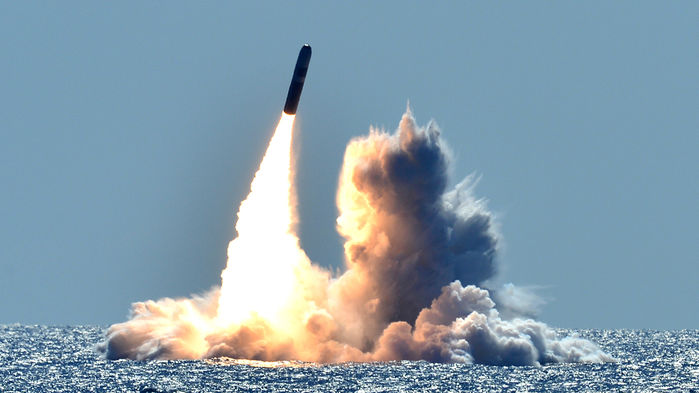
The U.S. Department of Defense (DOD) has severed its 60-year ties to a group of academics known as Jason, putting in jeopardy the group’s ability to conduct studies for the government on a range of national security issues.
Pentagon Pulls Funding for Team of Academics Who Work on the Most Difficult Scientific Problems
BY MATT NOVAC | gizmodo.com
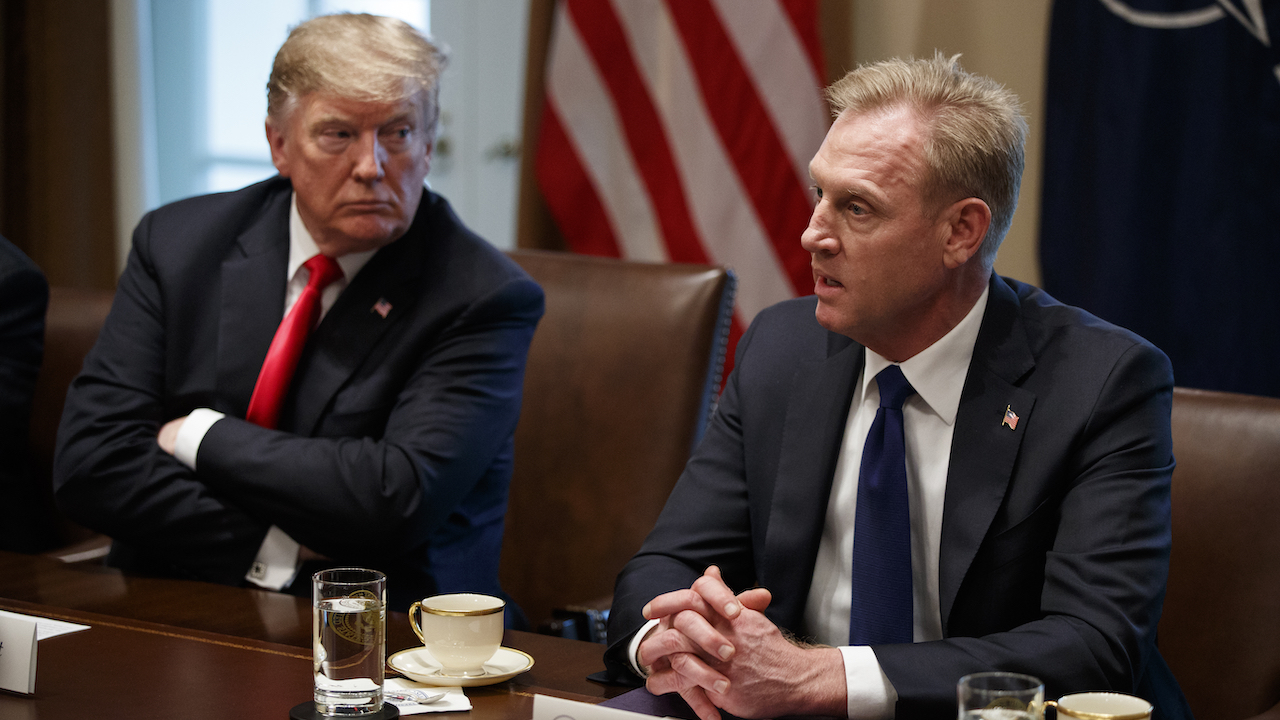
Photo: Associated Press
The U.S. Department of Defense under Patrick M. Shanahan has quietly pulled funding for an independent organization called the Jason Group under the Pentagon’s latest budget proposal. And it’s just one more way that the Trump regime is chipping away at independent scientific voices in the U.S. government.
The Jasons, as they’re sometimes called, are a team of academics who have historically tackled some of the most pressing scientific problems on behalf of the U.S. military. News that the Jason contract had been terminated was first revealed yesterday during a House budget meeting with members of the National Nuclear Security Administration (NNSA) and reported by Science magazine.
The Threat of Nuclear War Is Still With Us
The U.S. must re-engage with Russia to ensure the ultimate weapon doesn’t spread and is never used.
BY GEORGE P. SHULTZ, WILLIAM J. PERRY & SAM NUNN | wsj.com
The most difficult task facing the U.S. is also the most important—to refocus on America’s most vital interests even as we respond firmly to Russia’s aggressions.
New Mexico Is Divided Over The ‘Perfect Site’ To Store Nation’s Nuclear Waste
“There’s nobody that’s been able to demonstrate to me that there isn’t risk here,” says New Mexico Gov. Michelle Lujan Grisham. “There is risk. We need to be clear about that. I don’t think it’s the right decision for the state.”
BY NATHAN ROTT | npr.org
Thirty-five miles out of Carlsbad, in the pancake-flat desert of southeast New Mexico, there’s a patch of scrub-covered dirt that may offer a fix — albeit temporarily — to one of the nation’s most vexing and expensive environmental problems: What to do with our nuclear waste?
Despite more than 50 years of searching and billions of dollars spent, the federal government still hasn’t been able to identify a permanent repository for nuclear material. No state seems to want it.
The F-35 Fighter Jet Will Cost $1.5 Trillion. It’s Time for New Priorities.
BY WILLIAM R. PITT | TRUTHOUT.ORG April 11, 2019
U.S. taxpayers are no strangers to getting saddled with monstrously expensive weapons programs at the expense of basic needs like food, shelter and education. The Pentagon paid $44 billion for 21 very fragile B-2 stealth bombers, few of which still fly in combat roles. The F-22 fighter, coming in at more than $350 million per plane, was built to combat Cold War adversaries who ceased to exist six years before the first jet rolled off the production line. The sticker price for Ronald Reagan’s harebrained “Star Wars” missile defense program stands at around $60 billion.
Until we find a better way, we will continue to spiral ever downward to dissolution.
Federal Watchdog Probes Trump Admin Push for Saudi Nuke Deal
In 2017 Team Trump worked to clinch a nuclear deal with Saudi Arabia—and an independent investigative agency wants to know what happened behind closed doors.
BY ERIN BANCO | thedailybeast.com
One of the government’s top investigative agencies has looked at allegations of potential wrongdoing by individuals in the Trump administration about their planning of a nuclear deal with Saudi Arabia, according to two individuals with knowledge of the probe.
The line of inquiry is part of a broader investigation in the Office of the Special Counsel—an independent federal investigative and prosecutorial agency—into alleged politically motivated personnel decisions at government offices.
The OSC, which can seek corrective and disciplinary action, is looking at whether officials were retaliated against for raising concerns about the administration’s work related to a Saudi nuclear deal. As part of that investigation, OSC has also reviewed allegations about potentially improper dealings by senior members of the Trump administration in their attempt to map out a nuclear deal with Riyadh, according to two sources with knowledge of OSC’s work.
The details of the OSC probe, previously unreported, are the first indication that a government body other than Congress is investigating matters related to a potential nuclear deal between the U.S. and Saudi Arabia. OSC declined to comment on the record for this story.
The One Place in the US Google Earth Stopped Mapping
BY DRUV MEHROTRA & BRENDAN BYRNE | vice.com
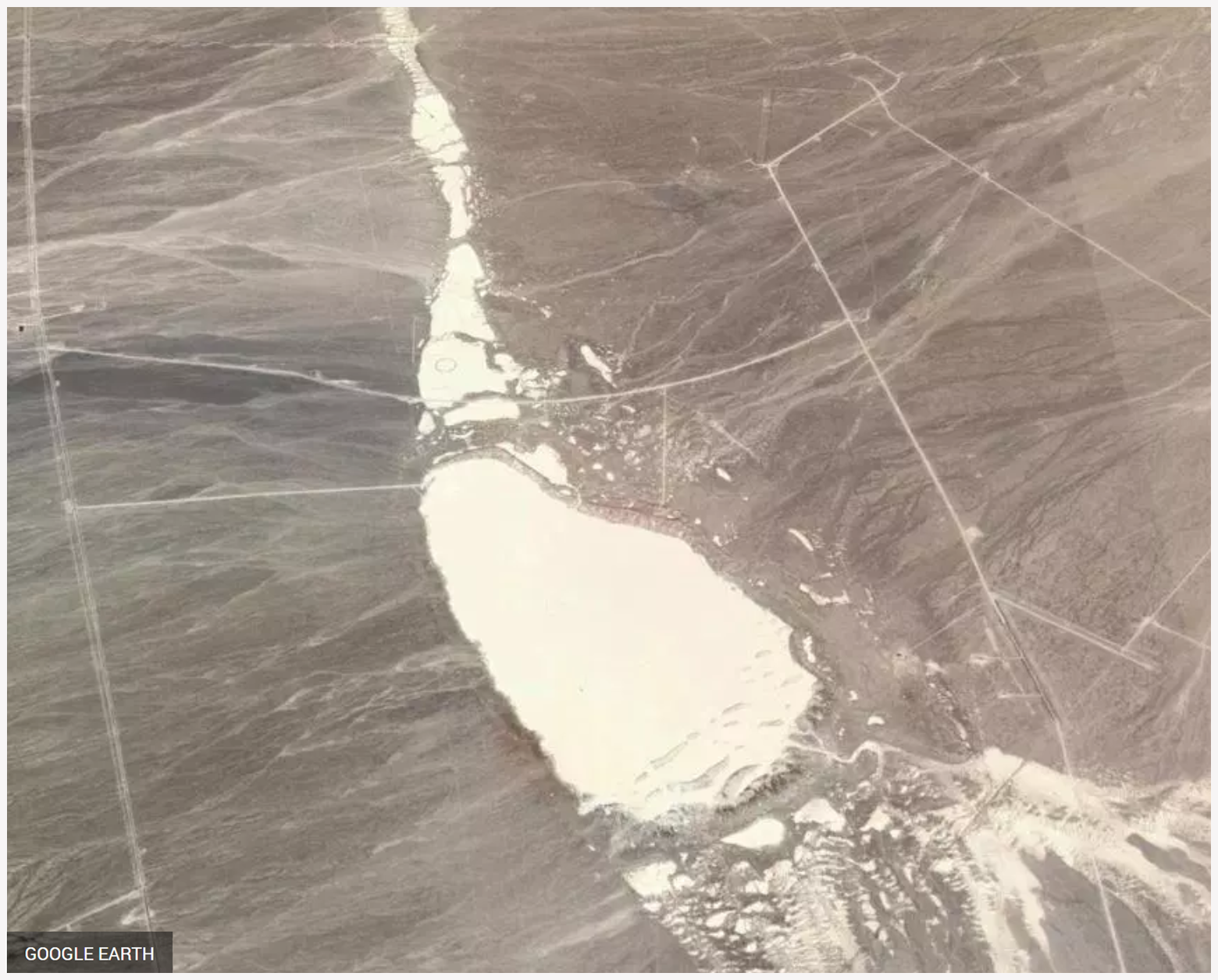
Tonopah is a subsection of the Nellis Test and Training Range, which is jointly operated by the Department of Energy and Air Force. Since the early 1950s, the Nellis Range has been the site of extensive government aerospace and weapons testing.
The Nellis Complex contains the drone pilot HQ Creech Air Force Base, the site of extensive nuclear detonations formerly known as the Nevada Proving Grounds, and what is colloquially referred to as Area 51. The F-117A Nighthawk stealth fighter, experimental unpersoned aerial vehicles, and, most recently, the delivery vehicle of the much-thunkpieced B61-12, a “steerable,” variable yield nuclear bomb, have been tested there.
Original article: vice.com
A Nuclear Missile Gets Dismantled: Stop-motion Video
What goes up can be dismantled
BY RACHEL BECKER | theverge.com | Video by Smriti Keshari/Outrider Foundation
In a surprisingly cheerful stop-motion animation released today, two disembodied hands dismantle a model of a Minuteman III missile, a weapon that — if launched — could send a nuclear warhead across the world. The hands pull it apart, burn the fuel and explosives, and safely dispose of the nuclear warhead. “So now you know,” the narrator says. “We can do this.”
The video comes from the Outrider Foundation, the same educational nonprofit that created an uncomfortably beautiful blast simulator that lets you nuke your backyard. This time, the Outrider Foundation brings its design aesthetic to a less apocalyptic message about nuclear weapons: “They are built by humans. We know how to take them apart. We can make decisions about them that make our world safer,” says Tara Drozdenko, the Outrider Foundation’s managing director of nuclear policy and nonproliferation.
Nuclear power excluded from EU’s green investment label
The European Parliament voted on a proposed classification for sustainable assets on Thursday (28 March), voting to exclude nuclear power from receiving a green stamp of approval on financial markets.
BY CLAIRE STAM & ALICIA PRAGER | euractiv.com
The abandoned Satsop Nuclear power plant in the state of Washington, US. [sharkhats / Flickr]The text voted in Parliament also excludes fossil fuels and gas infrastructure from the EU’s proposed green finance taxonomy, which aims to divert investments away from polluting industries into clean technologies. In a bid to prevent “green-washing”, the Parliament text also requires investors to disclose whether their financial products have sustainability objectives, and if they do, whether the product is consistent with the EU’s green assets classification, or taxonomy.
Chernobyl’s disastrous cover-up is a warning for the next nuclear age
“Fallout from bomb tests carried out during the cold war scattered a volume of radioactive gases that dwarfed Chernobyl.The Chernobyl explosions issued 45m [million] curies of radioactive iodine into the atmosphere. Emissions from Soviet and US bomb tests amounted to 20bn [billion] curies of radioactive iodine, 500 times more.”
Ukrainians protest against the cover-up of the consequences of the Chernobyl accident, April 1990.Photograph: Игорь Костин/РИА Новости
BY KATE BROWN | theguardian.com
Before expanding nuclear power to combat climate change, we need answers to the global health effects of radioactivity.
In 1986, the Soviet minister of hydrometeorology, Yuri Izrael, had a regrettable decision to make. It was his job to track radioactivity blowing from the smoking Chernobyl reactor in the hours after the 26 April explosion and deal with it. Forty-eight hours after the accident, an assistant handed him a roughly drawn map. On it, an arrow shot north-east from the nuclear power plant, and broadened to become a river of air 10 miles wide that was surging across Belarus toward Russia. If the slow-moving mass of radioactive clouds reached Moscow, where a spring storm front was piling up, millions could be harmed. Izrael’s decision was easy. Make it rain.
Prospect of a nuclear war ‘higher than it has been in generations’, warns UN

“In a world defined by “competition over cooperation, and the acquisition of arms, prioritized over the pursuit of diplomacy”, the threat of a nuclear weapon being used is “higher than it has been in generations,” the Security Council heard on Tuesday.”
The warning came from Izumi Nakamitsu, the UN High Representative for Disarmament Affairs, in a meeting convened in support of the Non-Proliferation Treaty (NPT), ahead of the next conference to review the historic accord, scheduled for 2020.
The possible use of nuclear weapons is one of the greatest threats to international peace and security Izumi Nakamitsu, UN High Representative for Disarmament Affairs
The NPT, which entered into force in 1970, represents the only multilateral, binding commitment to the goal of disarmament by the States which officially stockpile nuclear weapons.
Budget compilation, PR, & more on DOE/NNSA nuclear weapons budget for FY 2020 at: https://t.co/nXsWLKtAAd
• Weapons up 11.8%, cleanup down 9.8%
• NNSA plans to cut "Nonproliferation & Arms Control" by 2/3's in FY 2021
•"Energy Efficiency and Renewable Energy" cut by 85.6%— Nuclear Watch NM (@NuclearWatchNM) April 2, 2019
Sens. Menendez and Rubio Question Energy Secretary over Approval of U.S.-Saudi Nuclear Cooperation
FOR IMMEDIATE RELEASE April 2, 2019
WASHINGTON – Senator Bob Menendez (D-N.J.), Ranking Member of the Senate Foreign Relations Committee, and Senator Marco Rubio (R-Fla.), today sent a letter to Secretary of Energy Rick Perry expressing their concern and asking for clarifications about the Administration’s approval of multiple licenses for U.S. companies to sell nuclear energy technology and support to Saudi Arabia. The United States does not have a framework pact for bilateral nuclear cooperation known as a “123 Agreement” with Saudi Arabia, yet the Department of Energy took the unusual step of authorizing the transfer of certain nuclear energy technologies and assistance to the Kingdom.
“The Kingdom frankly has engaged in many deeply troubling actions and statements that have provoked alarm in Congress and led lawmakers to begin the process of reevaluating the U.S.-Saudi relationship and our long-term stability and interests in the region,” wrote the senators. “We therefore believe the United States should not be providing nuclear technology or information to them at this time.
“We are very concerned about the nuclear proliferation risk associated with the Kingdom’s nuclear program, concluded the Senators before requesting Secretary Perry provide Congress with detailed information about his decision to authorize the nuclear technology transfer.
Animated info-graphic video on “What happens if make a huge pile from all 15,000 nuclear bombs and pull the trigger? And what happens if we make an even bigger pile?”
#NMED met with stakeholders today to discuss legacy contamination in New Mexico – this is what #collaboration looks like! pic.twitter.com/rfayv6Zld7
— New Mexico Environment Department (@NMEnvDep) April 2, 2019
Treaty’s End Would Give U.S., Russia Impetus to Make More Nukes: STUDY
“Neither country would have the same degree of confidence in its ability to assess the other’s precise warhead levels,” CNA’s Vince Manzo wrote in the study. “Worst-case planning is also more likely as a result.”
BY ARSHAD MOHAMMED & JONATHAN LANDAY | reuters.com
WASHINGTON (Reuters) — The demise of the only U.S.-Russia arms control pact limiting deployed nuclear weapons would make it harder for each to gauge the other’s intentions, giving both incentives to expand their arsenals, according to a study to be released on Monday.
The expiration of the New START accord also may undermine faith in the Nuclear Non-Proliferation Treaty, which calls on nuclear states such as the United States and Russia to work toward nuclear disarmament, as well as influence China’s nuclear posture, historically one of restraint.
HIGH-RISK SERIES: Substantial Efforts Needed to Achieve Greater Progress on High-Risk Areas
Regarding proper use of taxpayers’ money, DOE and NNSA have been on the Government Accountability Office’s High Risk List for project mismanagement for 27 consecutive years (begins page 217 in full report).
U.S. Companies Granted Authorizations for Nuclear Work in Saudi
Want to help the erratic, murderous Saudi regime develop nuclear technology? That’s OK with the Department of Energy.
BY ERIN BANCO | thedailybeast.com
The U.S. Department of Energy has approved six authorizations for U.S. companies seeking to conduct nuclear related work in Saudi Arabia, according to two sources with knowledge of those approvals. Federal law stipulates that companies obtain clearance from the U.S. government for exporting nuclear technology to or engaging in the production or development of special nuclear material in Saudi Arabia.
The authorizations—known as Part 810s, referring to a clause in federal regulations —allow U.S. companies to divulge specific details about plans for working in Saudi Arabia and certain information about the nuclear technology. For example, a company would need a Part 810 to transfer physical documents, electronic media or the “transfer of knowledge and expertise” to Saudi Arabia, according to the Department of Energy.
US underground nuclear waste dump explained
BY SUSAN MONTOYA BRYAN | stripes.com March 23, 2019
WHAT IS THE WASTE ISOLATION PILOT PLANT? WIPP is the United States’ only permanent underground repository licensed to take what is known as transuranic waste, or waste generated by the nation’s nuclear weapons program that’s contaminated with radioactive elements heavier than uranium.
Nuclear News Archives – 2021
Nothing Found
It seems we can’t find what you’re looking for. Perhaps searching can help.
Nuclear News Archives – 2020
Nothing Found
It seems we can’t find what you’re looking for. Perhaps searching can help.
Nuclear News Archives – 2019
Nothing Found
It seems we can’t find what you’re looking for. Perhaps searching can help.
Nuclear News Archives – 2018
Nothing Found
It seems we can’t find what you’re looking for. Perhaps searching can help.

